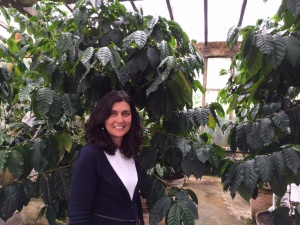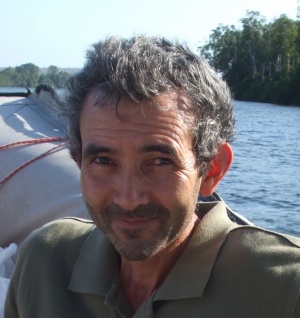First report of dieback caused by Neofusicoccum batangarum in cashew in Guinea-Bissau
- Articles in SCI Journals
- Dec, 2020
Diniz, I., Batista, D., Pena, A.R., Rodrigues, A.S.B., Reis, P., Baldé, A., Indjai, B., Catarino, L. & Monteiro, F. (2020) First report of dieback caused by Neofusicoccum batangarum in cashew in Guinea-Bissau.
Plant Disease,
, 1-4. DOI:10.1094/PDIS-10-20-2308-PDN (IF2020 4,438; Q1 Plant Sciences)
Summary:
Cashew (Anacardium occidentale L.) is a cash crop with a highly significant economic importance in West Africa, particularly in Guinea-Bissau (Monteiro et al. 2015, 2017). In October 2018, dieback-like symptoms such as wilt and necrosis of apical shoots were observed in 10 % of the cashew trees grown in a 100 plant-orchard in Bolama Island at Bijagós archipelago, Guinea-Bissau. Six symptomatic apical shoots from individual plants were collected for fungal isolation and identification. Tissue pieces (3 × 2 mm) from healthy to diseased margins were surface sterilized with 1 % sodium hypochlorite, washed twice with sterilized water, placed on potato dextrose agar (PDA, Difco® Laboratories) supplemented with potassium thiocyanate (50 µg/ml), and incubated at 24 ± 1 °C in the dark for 7 days. Four fungal colonies were isolated (67 %) and purified through hyphal tips removal, displaying rapid growth rate, and aerial mycelia that initially was white, turning later to dark greenish on PDA. Pycnidia produced on 1.5 % water agar and sterilized pine needles (± 25ºC; near-UV light) were solitary, covered by mycelium, obpyriform to ampulliform (152.5 ± 41.6 × 135.2 ± 30.8 μm, n = 30). Conidia were unicellular, hyaline, smooth, fusoid to ovoid, thin-walled, measuring 16.21 ± 1.52 × 5.84 ± 0.66 μm (n = 50, L/W 2.8). Such morphological features are characteristic of Neofusicoccum spp. (Phillips et al. 2013). For molecular identification, genomic DNA was extracted from a representative isolate GB160 and partial regions of ribosomal internal transcriber spacer (ITS) (ITS1/ITS4; White et al. 1990), translation elongation factor 1-α (EF1-α) (EF1-688F/EF1-1251R; Alves et al. 2008) and β-tubulin (β-tub) (Bt2a/Bt2b; Glass and Donaldson 1995) genes were amplified as previously described, respectively, with BSA (50 mg/ml). Amplicons were sequenced and deposited in GenBank (ITS, MN952993; EF1-α, MN952204; β-tub, MN952208). BLAST analysis of ITS, EF1-α and β-tub gene sequences showed 100 % identity with Neofusicoccum batangarum reference strain CBS124923 (FJ900608, FJ900654, FJ900635, respectively). Maximum-likelihood and Bayesian Inference analyses from the concatenated dataset placed GB160 isolate within the N. batangarum cluster (BS = 72 %; PP = 0.95). For pathogenicity assessment, 3-month-old cashew “Caju di Terra” plants (n = 8) grown in a greenhouse under controlled conditions were inoculated following a randomized block design as described by Lima et al. (2013). Briefly, 3 mm diam. stem tissue bark was removed and replaced with a 3 mm diameter PDA plug retrieved from the colony margin. Inoculation wound was covered with sterilized wet cotton and sealed with parafilm. Eight control plants were only treated with PDA plugs and the wound covered and sealed as described. After 15 days, all inoculated plants displayed similar symptoms to those observed in the field, and vascular lesions (10.8 ± 4.0 cm), whereas control plants remained symptomless. Koch’s postulates were fulfilled by successful re-isolation of the pathogen from all inoculated stems and identification by morphology and gene sequencing. N. batangarum was identified associated with Anacardium spp. in Brazil (Netto et al. 2017) and recently reported as causing grapevine dieback in Brazil (Rêgo et al. 2020). To our knowledge, this is the first report of N. batangarum causing cashew dieback in Guinea-Bissau and West Africa. Occurrence of this disease may represent a significant impact for cashew production since this crop is the major agricultural commodity in Guinea-Bissau.
https://apsjournals.apsnet.org/doi/10.1094/PDIS-10-20-2308-PDN





